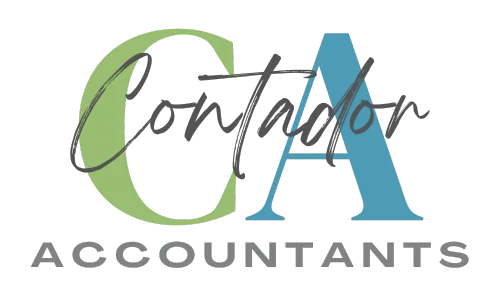What is most important? Building a profitable business that can stand the test of time, or being concerned only with whether you can pay your debts today? While it’s crucial that you can pay your staff and bills when they become due, which is what we’ve talked about in this blog, the long-term plan is so much more important. And you need to start building a profitable, sustainable business as soon as possible; otherwise, there will be no end to juggling cash flow.
n this blog, we’re going to discuss some of the most important long-term metrics you need to track, as these can help you to build and grow a sustainable business.
1. Revenue Growth
This ratio calculates the growth in sales from one period to the next. You can calculate growth year-over-year, or month-over-month, however, year-over-year growth is a much better calculation as it takes the effects of seasonal fluctuations into account.
Example
Let’s assume the following:
- Revenue year 1: R1 million
- Revenue year 2: R1.2 million
Calculation:
(Revenue year 2 – revenue year 1) / revenue year 1
= (1,200,000 – 1,000,000) / 1,000,000
= 0.2
Ratio:
Revenue Growth = 20%
Conclusion:
The ideal ratio will differ from business to business. Your growth should at least be in line with inflation to be in the same position as the previous year, but usually, we have higher goals than that. Compare your growth rate with that of your competitors. If you’re way behind them, it may be a sign that you will soon lose your portion of the market. Investigate ways that you can consistently grow this ratio.
2. Gross Profit Percentage
Your Gross Profit Percentage (GPP) calculates how much you’ve made after direct costs/cost of sales are taken into account, as a percentage of profit. It basically measures how efficient your manufacturing or distribution processes are.
A service business’ GPP will be very high, as this type of business has minimal direct costs, if at all. A retail or manufacturing business’ GPP will be much lower.
Example
Let’s assume the following:
- Sales: R1,000,000
- Cost of sales: R600,000
Calculation:
(Sales – cost of sales) / sales
= (1,000,000 – R600,000) / 1,000,000
= 0.4
Ratio:
Gross Profit Percentage = 40%
Conclusion:
Now that you have the ratio, you need to analyse it further. There are two comparisons you want to do:
- Compare with other companies in your industry. Without knowing how other businesses in your industry are doing, you won’t know whether you’re performing well or not. If the industry standard is 30%, a 40% ratio means that you’re doing better than your competitors, and if it’s 50%, you know that you’re not doing well.
- Compare your current GPP with your own ratio for the prior period (year/month). Doing this is essential, especially if you want to improve your performance over time.
If your GPP is too low, it can be due to one of the following reasons:
- Wastage: There may be too much wastage, due to making rejects, too many cut-offs from raw materials, or theft.
- Costs: Your costs may be too high. Look for ways to bring costs down, like sourcing new suppliers, negotiating volume discounts, etcetera.
- Staff costs: Productivity may be too low, in which case you can look at offering staff incentives or streamlining processes to improve productivity.
- Sales prices: Your sales prices may be too low. In this case, you need to test higher prices.
3. Operating Margin
The Operating Margin measures the operating profit (before tax and interest are deducted) as a percentage of revenue.
Example
Let’s assume the following:
- Sales: R1,000,000
- Cost of sales: R600,000
- Gross profit: R400,000
- Other expenses: R300,000
Calculation:
(Gross profit – operating expenses) / revenue
=(400,000 – 300,000) / 1,000,000
=0.1
Ratio:
Operating Margin = 10%
Conclusion:
The higher your Operating Margin, the better. Again, this is something you need to compare with others in your industry, as well as with your prior period margins.
If you have a healthy Gross Profit Percentage, but your Operating Margin is too low, it can be due to one of the following reasons:
- Your overheads are too high. Again, see where you can reduce your costs. (Refer to 2 above).
- It can also mean that your sales volumes are too low. Investigate ways to increase your sales.
4. Net Profit Margin
The Net Profit Margin measures the net profit (after tax and interest are deducted) as a percentage of revenue.
Example
Let’s assume the following:
- Sales: R1,000,000
- Cost of sales: R600,000
- Other expenses: R300,000
- Net profit before tax and interest (PBT): R100,000
- Tax and interest: R50,000
Calculation:
(PBT – tax and interest) / revenue
= (100,000 – 50,000) / 1,000,000
= 0.05
Ratio:
Net Profit Margin = 5%
Conclusion:
The higher this margin, the better. You should again compare this margin with other businesses in your industry, as well as your margin for the prior year.
As an example, a large retail business, like Makro, will have a very low Net Profit Margin, but they will sell a lot more products. Their NPM will be low, but their total net profit will be much higher than that of a local retail business for instance, because of higher volumes.
If your Operating Margin is healthy, but your Net Profit Margin is too low, it can be because of one of the following:
- Your interest rates are too high. Try to negotiate better interest rates, if possible.
- Your debts are too high. Try to increase your instalments to bring your debts down to a manageable number.
- You may be unaware of tax deductions or rebates available to you. Get in touch with us to discuss your taxes.
5. Return on Assets
This ratio calculates how much profits your assets generate for you. The higher this number is, the better for you. This calculation is typically used in an industry where you need to invest in assets first to generate income, such as a manufacturing entity.
Example
Let’s assume the following:
- Net profit before tax: R100,000
- Total assets: R1,000,000
Calculation:
Net profits before tax / total assets
= 100,000 / 1,000,000
= 0.1
Ratio:
Return on Assets = 10%
Conclusion:
It means that it will take about ten years to make your investment back (not taking time value of money into account). The higher this ratio, the better for you. You should compare this with other businesses in your industry, as well as prior year figures.
If this percentage is low, it can point to a number of problems:
- Sales are too low, or costs are too high.
- The price paid for equipment may have been too high. Make sure you research different suppliers when investing in equipment again.
- Equipment isn’t used to its full potential. If you continuously use this equipment in your production, are your processes efficient? If there are long periods of times when the equipment isn’t in use, can you rent it out during those times?
Conclusion:
There is no one-size-fits-all approach when it comes to analysing and improving growth ratios. What may be the perfect solution for one business, may be an unthinkable option for another. It is vital that you understand which ratios are best for you to track, what the optimal ratio is, and what the specific steps are that you need to take to improve your ratios. If you need help with any of these steps, get in touch with Contador Accountants.

